Maximizing Efficiency: The Complete Guide to Rat Guard Glue Traps
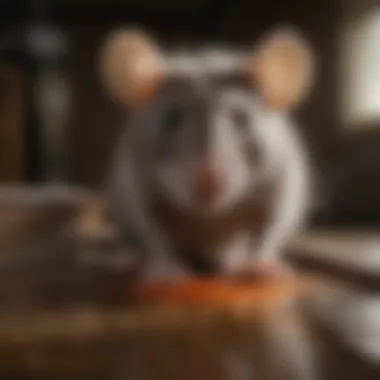
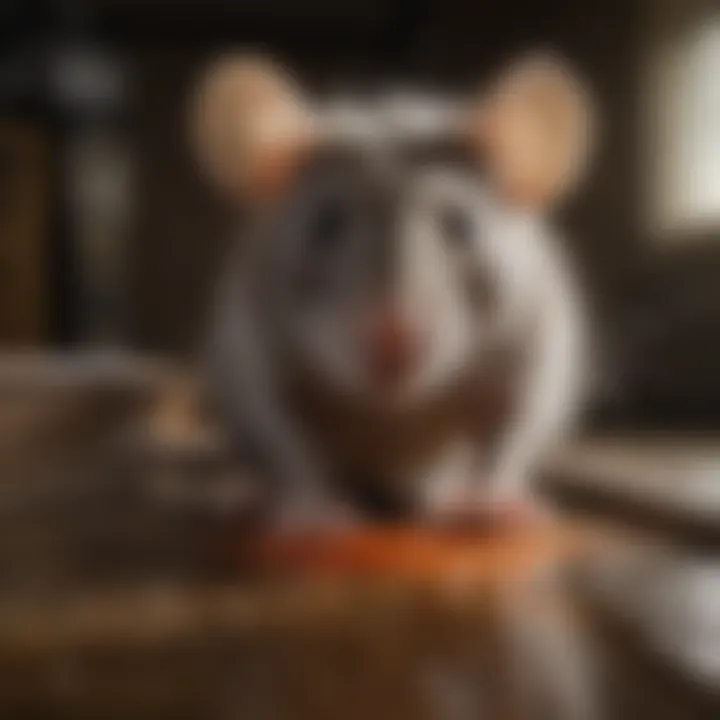
Preventive Pest Control Strategies
Preventive pest control strategies are essential for maintaining a pest-free home environment. Taking proactive measures to prevent pests from entering your living spaces can save you time, money, and frustration in the long run.
House Exterior Protection
When it comes to house exterior protection, sealing cracks and crevices is crucial in barring pests' entry points. Regularly inspect your home's exterior for any openings that pests could exploit. Additionally, keeping your surroundings free of debris and clutter can deter pests from nesting near your property. Invest in quality sealants to ensure a thorough job of filling in gaps that could serve as potential entryways for various pests.
Yard Maintenance
Maintaining a pest-free yard involves adhering to essential yard care routines. Trimming vegetation, mowing the lawn regularly, and removing standing water sources can contribute significantly to deterring pests from inhabiting your outdoor space. Implement methods such as using natural pesticides or insect-repelling plants to keep your yard free from unwanted pests.
Indoor Cleanliness
Creating a pest-resistant indoor environment starts with expert cleaning tips and techniques. Regularly vacuuming, dusting, and wiping down surfaces can help eliminate potential food sources and hiding spots for pests. Proper sanitation practices in the kitchen and other living areas can aid in discouraging pests from taking up residence in your home.
Garbage Disposal
Efficient waste disposal methods are essential in pest prevention. Secure garbage cans with tightly fitting lids to prevent pests from scavenging for food in your trash. Properly separating recyclables from regular trash and promptly disposing of food waste can help reduce the likelihood of attracting pests to your home.
Other Pest Prevention Strategies
Innovative ways to safeguard your home include utilizing ultrasonic pest repellents, implementing physical barriers like mesh screens on windows and doors, and incorporating natural pest deterrents such as diatomaceous earth. By adopting a multi-faceted approach to pest prevention, you can create a less hospitable environment for unwanted intruders.
Introduction
Rat Guard Glue Traps are hailed as a crucial tool in pest control, offering a non-toxic and efficient method to combat rodent infestations. This segment will unravel the fundamentals of Rat Guard Glue Traps, shedding light on their mechanism of action, various types available, and the potential benefits they bring to the table. As we delve deeper, you will discover the significance of incorporating these traps into your pest management strategy, ensuring a safe and effective solution to rodent issues.
Understanding Rat Guard Glue Traps
Mechanism of Action
The Mechanism of Action of Rat Guard Glue Traps lies in their adhesive nature, designed to capture rodents effectively. These traps utilize a strong adhesive surface that ensnares unsuspecting rats upon contact. This key characteristic ensures swift and efficient trapping, making it a popular choice among individuals battling rodent nuisances. The unique feature of this mechanism is its ability to immobilize rodents without the use of harmful chemicals, presenting a safer alternative in pest control. However, one drawback is the potential cruelty involved in trapping rodents in this manner.
Types of Rat Guard Glue Traps
When exploring the Types of Rat Guard Glue Traps, one encounters a variety of options tailored to specific needs. From traditional flat glue boards to enclosed glue traps, each type offers distinct advantages. The key characteristic across all types is their efficacy in trapping rodents without posing a threat to human health. This makes them a beneficial choice for households seeking a non-toxic pest control solution. However, some users may find disposal of trapped rodents challenging as one of the downsides.
Potential Benefits
Diving into the Potential Benefits of Rat Guard Glue Traps reveals a host of advantages for users. These traps are highly effective in capturing rodents, preventing further infestations in a prompt manner. Their non-toxic nature ensures the safety of children and pets in the household, making them a popular choice among families. Moreover, Rat Guard Glue Traps are relatively cost-effective and easy to set up, offering convenience to users. However, one downside is the need for proper disposal methods to handle captured rodents ethically.
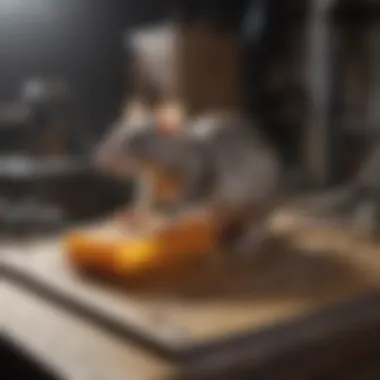
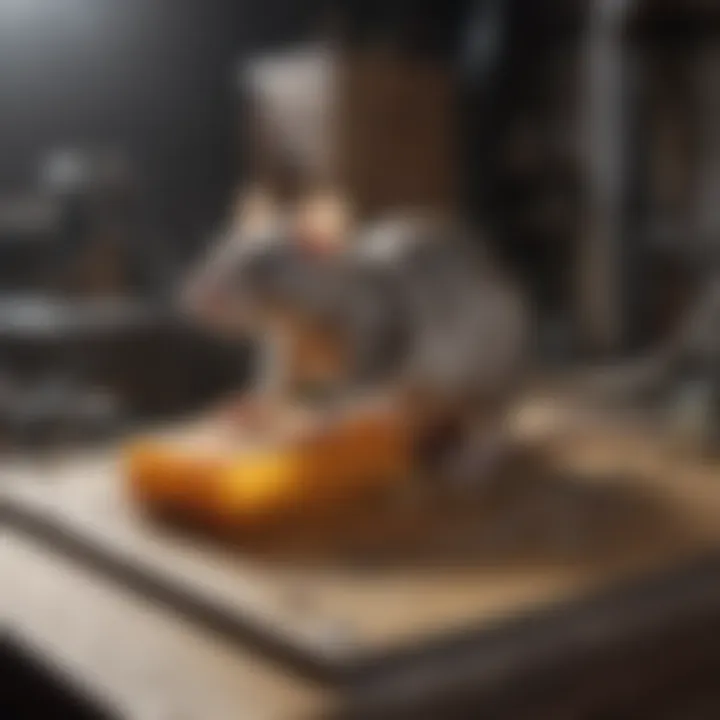
Choosing the Right Glue Trap
In the realm of pest control, selecting the ideal rat guard glue trap is paramount in ensuring effective rodent management. The choice of glue trap can significantly impact its overall performance and efficiency, making it a crucial decision for homeowners looking to tackle rat infestations. With various options available in the market, understanding the key considerations for choosing the right glue trap is essential.
Considerations for Selection
Size and Dimension
When it comes to Size and Dimension of glue traps, one must consider the specific needs of their environment. Larger traps may be suitable for open spaces or areas with multiple entry points, while smaller traps could fit snugly in confined spaces or along narrow pathways. The dimensions of the trap play a crucial role in capturing rats of different sizes effectively, ensuring that no rodent escapes once caught. Additionally, a well-sized trap can allow for multiple captures before needing replacement, increasing its longevity and cost-effectiveness.
Adhesive Strength
The Adhesive Strength of a glue trap is a pivotal factor in its success. A high adhesive strength ensures that rats are firmly trapped upon contact, minimizing the chances of escape. It is essential to opt for a glue trap with sufficient adhesive power to immobilize rodents swiftly and securely. However, excessive adhesive strength could pose challenges during disposal, necessitating careful handling to prevent accidental contact. Balancing the adhesive strength to a level that ensures effective trapping without becoming overly sticky is key to a successful glue trap.
Environmental Impact
Considering the Environmental Impact of glue traps is crucial for eco-conscious consumers. Opting for environmentally friendly adhesive options can minimize harm to non-target species and reduce chemical exposure in the surroundings. Biodegradable adhesives or those designed with sustainability in mind offer a more eco-friendly choice for pest control. However, it is essential to weigh the trade-offs between environmental impact and trapping efficiency to select a glue trap that aligns with both ethical and practical considerations.
Setting Up Rat Guard Glue Traps
In the realm of pest control using rat guard glue traps, setting them up correctly is crucial for their efficacy. Proper placement not only maximizes the chances of catching rodents but also ensures the safety of household members and pets. By strategically positioning these traps, homeowners can create an effective barrier against unwanted pests within their living spaces.
When considering the setting up of rat guard glue traps, one must take into account various factors such as the layout of the area, potential entry points for rodents, and areas where rodent activity is commonly observed. Placing traps near food sources, dark corners, and along walls where rodents frequently travel can significantly increase the success rate of capturing them. This strategic approach increases the likelihood of rodents encountering and getting ensnared by the adhesive surface of the traps.
Moreover, setting up rat guard glue traps in locations inaccessible to children and pets is essential to prevent any accidental contact with the traps. Securing the traps in elevated or enclosed spaces ensures that they target rodents while remaining out of reach of curious hands or paws. This precaution enhances the safety of the household environment and minimizes the risk of unintended interactions with the traps.
By understanding the significance of correctly setting up rat guard glue traps, homeowners can proactively combat rodent infestations and safeguard their dwellings from potential health hazards associated with uncontrolled rodent populations. This section equips readers with essential knowledge on the strategic placement of traps and underscores the importance of a well-thought-out approach to pest control.
Ideal Placement Locations
Tips for Effective Placement
When determining the ideal placement locations for rat guard glue traps, it is essential to capitalize on rodents' natural tendencies and behaviors. Placing traps along baseboards, near entry points, and in areas frequented by rodents enhances the traps' effectiveness. Moreover, positioning traps in secluded spaces where rodents feel secure can lure them into the adhesive surface, increasing captures.
An important tip for effective placement is to avoid cluttered areas or spaces with potential obstructions that could impede the traps' functionality. Ensuring a clear path for rodents to approach the traps maximizes the chances of successful captures and minimizes the possibility of rodents avoiding or circumventing the traps.
The unique feature of strategic placement lies in its ability to exploit rodents' behavior patterns, enticing them towards the traps while avoiding distractions or obstacles that could reduce the traps' efficiency. By adhering to these tips, homeowners can optimize the placement of rat guard glue traps and elevate their pest control efforts.
Avoiding Common Mistakes
Despite the importance of effective placement, common mistakes in positioning rat guard glue traps can hinder their performance. Placing traps in well-lit areas or near air vents may deter rodents from approaching them, reducing the traps' capture rate. Additionally, overlooking areas of high rodent activity or failing to rotate trap positions regularly can render the traps ineffective.
A key characteristic of successful pest control is the avoidance of common mistakes in trap placement, as these errors can compromise the traps' ability to capture rodents efficiently. By steering clear of placing traps in suboptimal locations or neglecting regular maintenance, homeowners can ensure the traps remain a formidable barrier against rodent infestations.
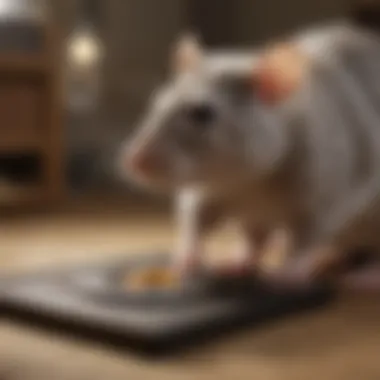
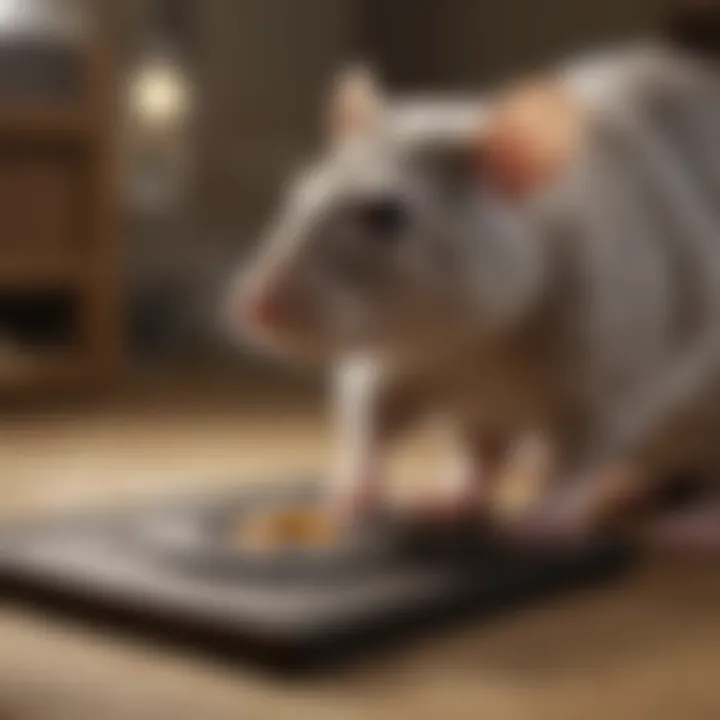
The unique feature of avoiding common mistakes lies in its preventive nature, guarding against oversights that could diminish the traps' effectiveness over time. By rectifying these errors and adopting best practices, homeowners can maintain a proactive stance in rodent control and sustain a pest-free environment.
Maximizing Trap Efficiency
When it comes to utilizing rat guard glue traps, maximizing trap efficiency is crucial for achieving successful pest control. This section aims to delve into specific elements that enhance the effectiveness of these traps, ensuring optimal results in rodent capture. By focusing on maximizing trap efficiency, individuals can increase the chances of trapping rodents effectively and minimizing their presence indoors. Factors such as placement, bait selection, and proper maintenance play a significant role in maximizing trap efficiency. Understanding these key aspects can lead to a more successful trapping experience.
Monitoring and Maintenance
Regular Checks
Regular checks are an essential aspect of ensuring the effectiveness of rat guard glue traps. By conducting routine inspections, individuals can monitor trap activity, identify captured rodents, and assess whether the traps require repositioning or bait replacement. Regular checks also help in gauging the success rate of the traps and making timely adjustments to improve efficiency. The key characteristic of regular checks lies in their proactive nature, allowing homeowners to stay ahead of any potential rodent infestations. Their consistent implementation ensures that traps remain active and ready to capture pests as needed.
Replacing Glue Boards
The process of replacing glue boards in rat guard traps is a fundamental aspect of trap maintenance. As glue boards become filled with captured rodents or dust and debris, their adhesive capacity diminishes, reducing the trap's effectiveness. Regularly replacing glue boards is essential for maintaining trap efficiency and maximizing pest capture. The key characteristic of this maintenance task is its role in preserving the traps' functionality over time. By ensuring that glue boards are clean and adhesive, homeowners can continue to trap rodents effectively and prevent reinfestation. However, replacing glue boards promptly is essential to avoid any potential escape attempts by rodents caught on ineffective boards.
Ethical Considerations
The ethical considerations surrounding the usage of rat guard glue traps play a crucial role in this discussion. It is imperative to address the moral implications of trapping rodents as part of pest control. By delving into the ethical aspects, we ensure that our pest control methods are not only effective but also humane. This section will explore the ethical dilemmas that arise when using rat guard glue traps, focusing on key elements such as animal welfare, environmental impact, and societal perceptions.
Dealing with Captured Rodents
Humanely Releasing Rodents
Humanely releasing rodents after they have been trapped is a fundamental aspect of ethical pest control. This practice emphasizes the importance of compassion towards all living beings, including pests. By opting to release rodents in a humane manner, we showcase our respect for life, even in the context of pest management. The key characteristic of humanely releasing rodents lies in treating these animals with dignity and kindness, regardless of them being considered pests. This choice aligns with the ethical considerations discussed in this article, emphasizing the value of all creatures and promoting a harmonious coexistence between humans and wildlife.
Disposing of Trapped Rodents
Disposing of trapped rodents involves a careful and responsible approach to handling pest control aftermath. Proper disposal methods are essential to safeguard against potential health hazards and maintain hygiene standards. The key characteristic of disposing of trapped rodents is to ensure that it is done in a way that minimizes any negative impact on the environment and human health. By discussing the unique feature of appropriate disposal techniques within the context of rat guard glue traps, we aim to underscore the significance of responsible waste management. While disposing of trapped rodents is a necessary step in pest control, it is essential to consider the advantages of proper disposal methods in mitigating risks associated with pest infestations and maintaining ethical standards.
Safety Precautions and Risks
In the realm of rat guard glue traps, prioritizing safety precautions and understanding potential risks are paramount. This section delves deep into the significance of maintaining a safe environment while using these traps. By adhering to strict safety protocols, individuals can mitigate any hazards associated with rodent control.
When considering safety precautions, one must first acknowledge the importance of protective measures. Implementing protective gear such as gloves and masks is crucial to avoid direct contact with the traps and any potential pathogens rodents may carry. These precautionary actions not only safeguard individuals from physical harm but also prevent the spread of diseases that rodents may transmit. By emphasizing protective measures, users can confidently engage in pest control activities without compromising their well-being.
Moreover, exploring potential hazards is key to preventing unforeseen accidents. Understanding the risks posed by glue traps, such as accidental skin contact or ingestion, allows users to take proactive measures to minimize these dangers. By highlighting the potential hazards involved, individuals can make informed decisions and implement strategies to mitigate risks effectively. Awareness of such hazards also promotes a proactive approach towards rodent control, ensuring the safety of both users and unintended targets.
Health Concerns
Protective Measures
Protective measures play a pivotal role in ensuring a safe and efficient experience with rat guard glue traps. By focusing on specific aspects like wearing protective gear, users can significantly reduce exposure to potential health risks. The utilization of gloves, masks, and long-sleeved clothing creates a barrier between the individual and the traps, minimizing the chances of direct contact.
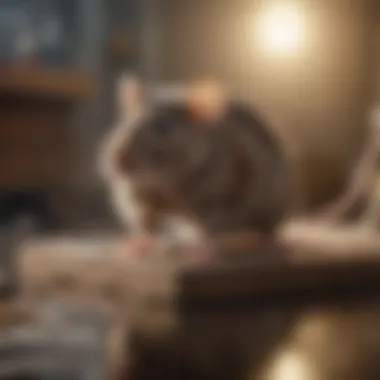

One key characteristic of protective measures is their ability to provide a physical shield against harmful substances present on the traps. This aspect not only shields users from adhesive components but also reduces the likelihood of allergenic reactions or irritation. Moreover, protective measures promote hygiene and cleanliness during trap handling, enhancing overall safety practices in pest control activities.
The unique feature of protective measures lies in their proactive nature, offering preemptive protection against hazards. By donning appropriate protective gear, users can engage confidently in trap setting and maintenance, ensuring a seamless experience without compromising safety. The advantages of protective measures in this context include risk reduction, increased user confidence, and the promotion of responsible pest control practices.
Potential Hazards
Exploring potential hazards associated with rat guard glue traps is essential for gaining a comprehensive understanding of health risks. Highlighting specific hazards such as skin irritations, allergic reactions, or accidental ingestion sheds light on the importance of caution when handling these traps. By recognizing potential hazards, individuals can proactively address safety concerns and preemptively mitigate risks.
A key characteristic of potential hazards is their unforeseeable nature, necessitating a vigilant approach to trap usage. Awareness of these risks empowers users to implement preventive strategies and exercise caution during trap maintenance. Understanding the potential dangers posed by glue traps enables users to approach rodent control activities with a heightened sense of awareness and preparedness.
While potential hazards pose risks, they also serve as cautionary reminders for users to exercise diligence and care. By acknowledging and addressing potential hazards proactively, individuals can maintain a safe environment and mitigate risks effectively. This heightened awareness fosters a culture of responsible trap usage and reinforces the importance of safety measures in pest control practices.
Common FAQs
Answers to Key Queries
How to Increase Trap Effectiveness?
When delving into the realm of increasing trap effectiveness, a critical aspect to consider is the proper placement of the glue traps. Ensuring strategic positioning in areas frequented by rodents can significantly boost the traps' efficiency. Moreover, maintaining cleanliness around the traps and removing competing food sources can attract rodents to the traps more effectively. Regularly monitoring and replacing glue boards when necessary are also key strategies in heightening trap effectiveness. By implementing these practices, individuals can optimize the trapping process, leading to a more successful pest control outcome.
Are Glue Traps Environmentally Friendly?
Addressing the environmental friendliness of glue traps sheds light on a significant concern in modern pest control practices. While glue traps are effective in capturing rodents, their environmental impact raises valid considerations. One key characteristic of glue traps that aligns with environmental concerns is their chemical-free nature, eliminating the use of toxic substances in pest control. However, the disposal of trapped rodents and the non-biodegradable nature of some traps pose environmental challenges. Despite this, advancements in eco-friendly glue trap options are emerging, providing environmentally conscious consumers with more sustainable alternatives. Understanding both the benefits and drawbacks of glue traps allows individuals to make informed choices that balance efficacy with environmental responsibility.
Final Thoughts
In this comprehensive guide to Rat Guard Glue Traps, the Final Thoughts section offers a crucial reflection on the overarching theme of efficacy and ethics in pest control. As we navigate through the intricacies of utilizing Rat Guard Glue Traps, it becomes imperative to strike a balance between achieving optimal results in rodent elimination and upholding ethical standards that promote humane treatment of animals. By delving into the nuanced discussions surrounding the utilization of glue traps as a pest control method, this Final Thoughts section sheds light on the significance of ethical considerations in conjunction with practical outcomes.
Furthermore, the Final Thoughts section serves as a summation of the key aspects addressed throughout the entire guide, encapsulating the core principles of deploying Rat Guard Glue Traps effectively while being mindful of ethical implications. By unraveling the complex relationship between efficacy and ethics within the realm of pest control, readers gain a deeper appreciation for the conscientious choices that underpin rodent management strategies. This reflective closure not only emphasizes the necessity of ethical awareness but also highlights the continuous evaluation required to optimize trap performance while upholding moral responsibilities.
Ultimately, the Final Thoughts section stands as a pivotal conclusion that synthesizes the multifaceted discussions on Rat Guard Glue Traps, resonating with readers keen on fostering a comprehensive understanding of pest control practices that align with both efficiency and ethical considerations.
Overall Verdict on Rat Guard Glue Traps
Balancing Efficacy and Ethics
Exploring the delicate equilibrium between efficacy and ethics in deploying Rat Guard Glue Traps unveils a critical dynamic within the pest control landscape. The concept of Balancing Efficacy and Ethics underscores the pivotal need to achieve successful rodent capture while adhering to moral standards that uphold the humane treatment of animals. This nuanced interplay between effectiveness and ethical conduct elucidates the fundamental principle that pest control methods should not compromise ethical integrity.
The key characteristic of Balancing Efficacy and Ethics lies in its ability to harmonize the practical aspect of pest extermination with the ethical responsibility of ensuring minimal suffering for the targeted rodents. By integrating this foundational concept into pest control practices, individuals can optimize trap performance while operating within a framework that values compassion and ethical stewardship. The unique feature of Balancing Efficacy and Ethics lies in its capacity to foster a sense of empathy towards rodents, transforming pest control into a conscientious endeavor that balances efficacy with ethical considerations.
Moreover, the advantages of incorporating Balancing Efficacy and Ethics in utilizing Rat Guard Glue Traps extend beyond mere efficacy; this approach cultivates a sense of environmental responsibility and compassionate pest management, establishing a benchmark of ethical conduct for individuals seeking effective rodent elimination strategies.
Future Trends in Pest Control
Anticipating the trajectory of pest control practices unveils insights into the Future Trends that may revolutionize rodent management strategies, including the utilization of Rat Guard Glue Traps. The evolution of pest control methodologies signifies a shift towards sustainable and innovative approaches that prioritize both environmental preservation and effective pest eradication. Future Trends in Pest Control encompass advancements in trap design, adhesive technology, and humane rodent removal techniques, all geared towards enhancing efficacy while minimizing environmental impact.
The key characteristic of Future Trends in Pest Control resides in its capacity to harness technological innovation and scientific advancements to refine pest control strategies, positioning Rat Guard Glue Traps as a sophisticated tool in modern rodent management practices. By embracing these emerging trends, individuals can embrace proactive pest control measures that are not only efficient but also eco-friendly, aligning with a global movement towards sustainable pest management solutions.
The unique feature of Future Trends in Pest Control lies in its potential to reshape traditional pest control paradigms, ushering in a new era of pest management that prioritizes humane practices, environmental sustainability, and enhanced efficacy. Embracing these upcoming trends in the utilization of Rat Guard Glue Traps heralds a future where pest control is synonymous with both effectiveness and ethical consciousness, heralding a positive shift towards responsible rodent management practices.



